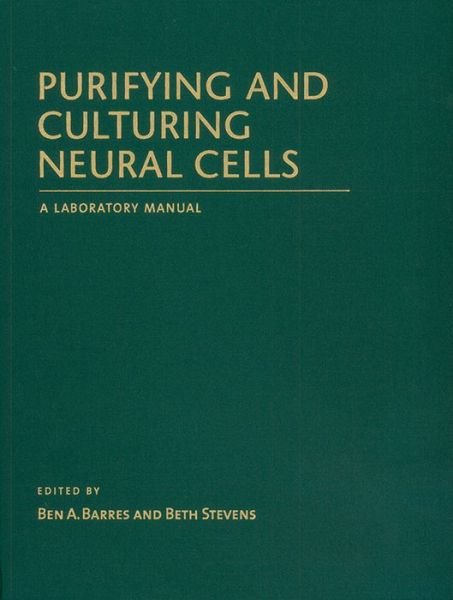
Tell your friends about this item:
Glia
Ben A Barres
Glia
Ben A Barres
Brief Description: "Glia are cells that serve to nourish and support the neuronal cells that relay electrical signals through the nervous system. They also play critical roles in development and synapse formation, helping to establish neural circuits. This book examines our understanding of the basic biology of glia and their roles in diseases such as Alzheimer's and cancer"--Provided by publisher. Table of Contents: Preface 1. ASTROCYTESAstrocyte Development and HeterogeneityOmer Ali Bayraktar, Luis C. Fuentealba, Arturo Alvarez-Buylla, and David H. RowitchAstrocytes Control Synapse Formation, Function, and EliminationWon-Suk Chung, Nicola J. Allen, and Cagla ErogluAstrocyte Regulation of Blood Flow in the BrainBrian A. MacVicar and Eric A. NewmanThe Astrocyte: Powerhouse and Recycling CenterBruno Weber and L. Felipe BarrosAstrocyte Calcium Signaling: From Observations to Functions and the Challenges ThereinBaljit S. Khakh and Ken D. McCarthyThe Blood-Brain BarrierRichard Daneman and Alexandre PratAstrogliosisMichael V SofroniewHow Do Astrocytes Participate in Neural Plasticity?Philip G. Haydon and Maiken Nedergaard 2. OLIGODENDROCYTES AND MYELINATIONOligodendrocyte Development and PlasticityDwight E. Bergles and William D. RichardsonTranscriptional and Epigenetic Regulation of Oligodendrocyte Development andMyelination in the Central Nervous SystemBen Emery and Q. Richard LuOligodendrocytes: Myelination and Axonal SupportMikael Simons and Klaus-Armin Nave 3. SCHWANN CELLSSchwann Cells: Development and Role in Nerve RepairKristjan R. Jessen, Rhona Mirsky, and Alison C. LloydThe Nodes of Ranvier: Molecular Assembly and MaintenanceMatthew N. Rasband and Elior PelesPerisynaptic Schwann Cells at the Neuromuscular Synapse: Adaptable, Multitasking Glial CellsChien-Ping Ko and Richard RobitaillePerineurial GliaSarah KucenasSchwann Cell MyelinationJames L. Salzer 4. MICROGLIAOrigin of Microglia: Current Concepts and Past ControversiesFlorent Ginhoux and Marco PrinzMicroglia Function in Central Nervous System Development and PlasticityDorothy P. Schafer and Beth StevensMicroglia in Health and DiseaseRichard M. Ransohoff and Joseph El Khoury 5. GLIA IN SMALL GENETIC MODEL SYSTEMSDrosophila Central Nervous System GliaMarc R. FreemanGlial Development and Function in the Nervous System of Caenorhabditis elegansShai ShahamGlial Cell Development and Function in ZebrafishDavid A. Lyons and William S. Talbot 6. DISEASE AND REPAIRGlia Disease and Repair-RemyelinationRobin J. M. Franklin and Steven A. GoldmanCentral Nervous System Regenerative Failure: Role of Oligodendrocytes, Astrocytes, and MicrogliaJerry Silver, Martin E. Schwab, and Phillip G. PopovichCell of Origin for Malignant Gliomas and Its Implication in Therapeutic DevelopmentHui Zong, Luis F. Parada, and Suzanne J. BakerAstrocytes in Neurodegenerative DiseaseHemali Phatnani and Tom Maniatis Index"Publisher Marketing: The majority of cells in the nervous system are glia. Long thought of as passive bystanders, glial cells are increasingly being appreciated for their active roles in nourishing, supporting, and protecting the neuronal cells that relay electrical signals through the nervous system. Written and edited by experts in the field, this collection from Cold Spring Harbor Perspectives in Biology examines the development of the major classes of glial cells-astrocytes, oligodendrocytes, Schwann cells, and microglia-and their roles in normal physiology and disease. The contributors describe how glia help establish and refine synaptic connections, maintain the metabolic and ionic milieu of nerve cells, myelinate axons, modulate nerve signal propagation, and contribute to the blood-brain barrier. The biological characteristics of glial cells in vertebrate and invertebrate model systems, including those of Drosophila, Caenorhabditis elegans, and zebrafish, are also covered. The authors also discuss the roles of glia in repair and regeneration, as well as in cancer and neurodegenerative diseases (e.g., Alzheimer's). This volume is therefore a valuable reference for all neurobiologists and biomedical scientists wishing to understand these diverse and dynamic cells.
Contributor Bio: Stevens, Beth Beth Stevens is a teacher who loves to make learning easy for struggling students who don t have the skills they need to succeed. She has been a specific learning disabilities teacher at the primary level for more than 20 years. Beth is a fifth-generation Floridian and comes from a long line of teachers. She is also partner in The Apron Ladies.
486 pages, illustrations
| Media | Books Hardcover Book (Book with hard spine and cover) |
| Released | November 30, 2014 |
| ISBN13 | 9781621820277 |
| Publishers | Cold Spring Harbor Laboratory Press,U.S. |
| Genre | Aspects (Academic) > Science / Technology Aspects |
| Pages | 486 |
| Dimensions | 187 × 263 × 29 mm · 1.34 kg |
| Editor | Barres, Ben A (Stanford University School of Medicine Department of Neurobiology) |
| Editor | Freeman, Marc R (Howard Hughes Medical Institute) |
| Editor | Stevens, Beth (Children's Hospital Boston Harvard University) |


